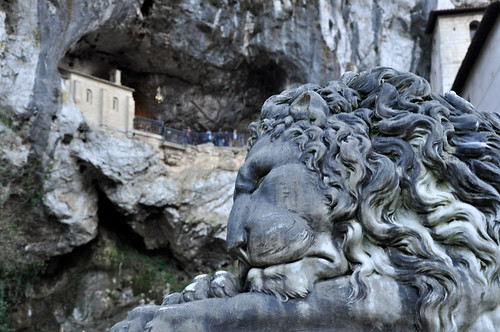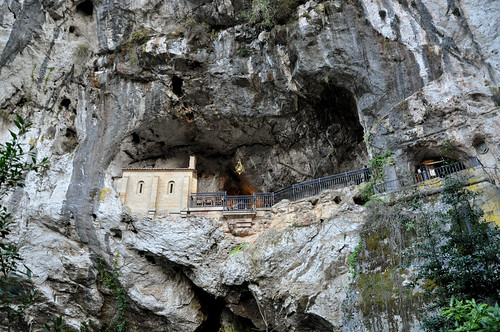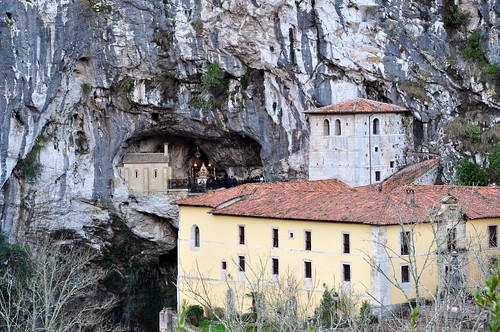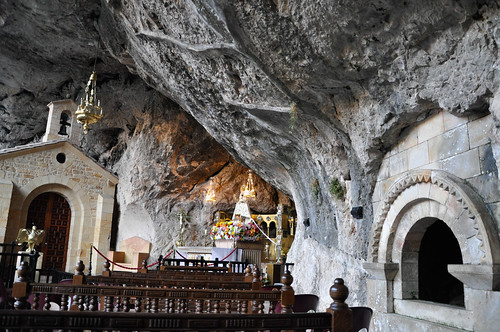
Dois sossegados leões tomam conta do santuário dedicado á Virgem da Covadonga. A Santa Cueva é um lugar de passagem obrigatória para quem entra nos Picos da Europa via Cangas de Onís. No post anterior já tinha contado um pouco da história deste lugar em que muitos acreditam que foi graças á Virgem que Pelágio pode vencer os muçulmanos e dar inicio á Reconquista da Península Ibérica.
Hoje podemos ver o seu túmulo na Santa Cueva e junto a ele a imagen da Virgem.
Two quiet lions take over the shrine dedicated to the Virgin of Covadonga. The Santa Cueva is a place of obligatory passage for those entering in the Picos de Europa via Cangas de Onis. In the previous post I had already told some of the history of this place that many believe was thanks to the Virgin that Pelagius could defeat the Muslims and started the Reconquest of the Iberian Peninsula.
Today we can see his tomb in Santa Cueva and close to him the image of the Virgin.
Today we can see his tomb in Santa Cueva and close to him the image of the Virgin.

Foi outro rei Astúriano que mandou construir este Santuário na mesma gruta onde dizem que Pelágio se refugiou durante as batalhas contra os mouro, o seu neto D. Afonso I (século VIII). Mas foi o Rei Afonso X (século XIII) de Castela que fez com que o túmulo do primeiro rei asturiano ficasse neste local que consideram sagrado e que é hoje zona de peregrinação. Uma placa assinala a visita do seu peregrino mais famoso, o Papa João Paulo II.
Dizem que Covadonga significa fonte da cova e é verdade que por baixo da gruta podemos ver uma pequena queda de água e um lago.
Another asturian king who built this temple in the same cave where they say Pelagius took refuge during his battles against the Moor, his grandson D. Alfonso I (eighth century). But it was King Alfonso X (XIII century) of Castile that made the tomb of the first king Asturian stay in this place that they consider sacred and what is now the area of pilgrimage. A plaque marks the visit of his most famous pilgrim Pope John Paul II.
They say that Covadonga means fountain of the cave and it is true that beneath it we can see a small waterfall and a lake.
They say that Covadonga means fountain of the cave and it is true that beneath it we can see a small waterfall and a lake.




Sem comentários:
Enviar um comentário